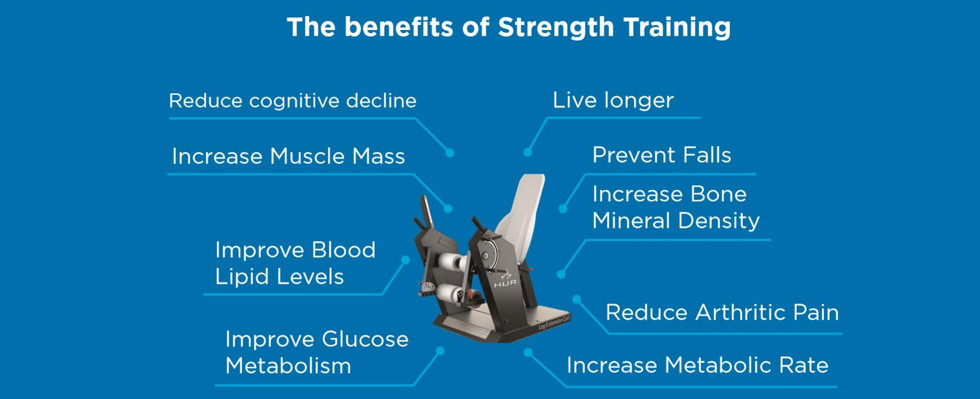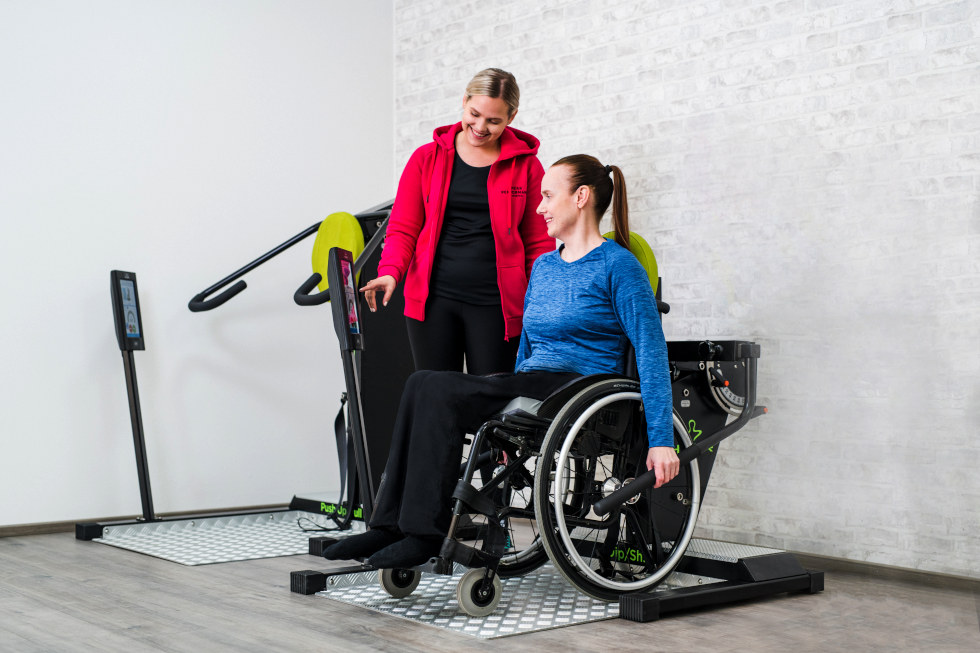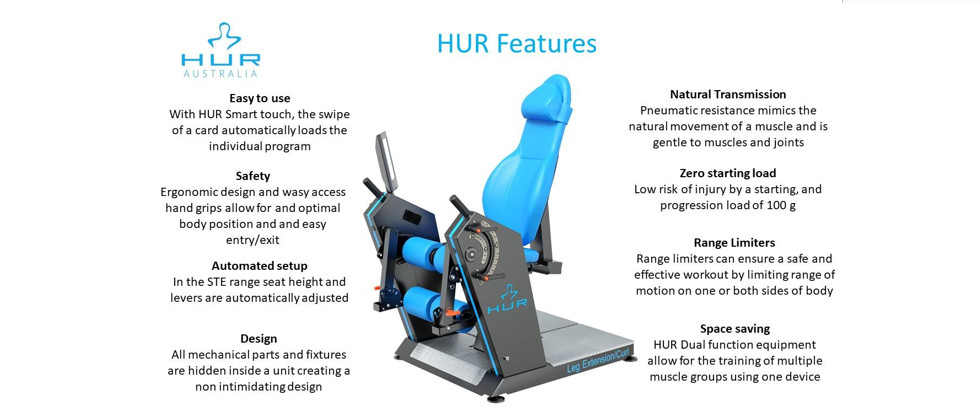
REHABILITATION AND REABLEMENT
Regular exercise has a key role in prevention, treatment, and rehabilitation of long-term illnesses. In a world where inactivity is one of the leading causes of non-communicable diseases and an early death, health management is becoming an important part of acute, long term and preventive rehabilitative means. Strength training is noted to provide many health benefits that can be applied in a variety of areas, including cardiovascular, geriatric, neurological as well as musculoskeletal diseases.
The significance of good physical fitness and regular physical exercise to health is undisputed. Strong scientific evidence exists on the benefits and effects of physical exercise in preventing and treating both diseases and their risk factors. The international disease treatment guidelines confirm that regular exercise plays a significant role in prevention, treatment, and rehabilitation of long-term illnesses such as hypertension, diabetes, and heart diseases—combined with other lifestyle changes and medication if needed.
”Insufficient physical activity is one of the leading risk factors for death worldwide and is a key risk factor for noncommunicable diseases (NCDs) such as cardiovascular diseases, cancer and diabetes.”
-WHO
As an example, a weekly strength training session over 30 minutes in duration reduced incidence of coronary heart disease by 23 % compared to participants who did not do strength training at all. Furthermore, a recent study also indicated that regular (≥ 2 times per week) strength training by over 65-year-olds reduced risk of death by 46% compared to those who did not do any strength training. Indeed, strength training has a large number of health benefits that can be applied in many fields of rehabilitation, including cardiovascular, metabolic, geriatric, musculoskeletal diseases and neurology.

When discussing rehabilitation and reablement, one can consider the stage of rehabilitation, as referred to the presentation of the illness. Rehabilitation is important in all stages of the illness, whether it is acute, chronic, or preventative. In a world where inactivity is one of the leading causes of non-communicable diseases and an early death, health management is becoming an important part of rehabilitative and also prehabilitative means.
Click here to see our Strength Training Equipment.
HUR REHABILITATION SOLUTION
Biomechanics in HUR equipment is dimensioned precisely to achieve an ideal muscular exercise and to prevent overloading the joints and connective tissues. Backrest design reduces the load on the spinal column. Range limiters allow the use of only a part of the range of motion if needed in HUR premium line. HUR Natural transmission via air-pressure technology gives important benefits such as
- Optimal loading of muscles
- No inertial effects
- High speed training possible
- Safety and efficiency
- Lower joint pressure
- Ease of adjustments
HUR premium line machines are well suited for rapid launch of rehabilitation and when training needs to be started from the beginning. All the main muscle groups can be trained effectively using the versatile equipment range and multi-purpose accessories. The resistance can start from zero and be adjusted ‘steplessly’ upwards. Machines support assistive training allowing passive mobilization of arms and legs.
The training can include both eccentric and concentric motion, but also one of these alone can be chosen. HUR Easy Access machines are a part of the HUR Premium Line and based on an open U-shaped design which allows independent training for wheelchair users, those with mobility and special needs, for example, spinal rehabilitation patients. The Easy Access line is available with the Smart Card option and with a separate and removable chair. The equipment is compatible with other HUR machines.

REHABILITATION AND REABLEMENT
 |
 |
 |
 |
|||
 |
 |
 |
 |
Rehabilitation of acute injuries and trauma
 Acute stage of rehabilitation is the immediate care for trauma and injuries and illnesses or the initial stage of recovery from surgery. Acute care can be provided as an inpatient in a hospital setting, as an outpatient at a rehabilitation facility or at home. The purpose of the acute stage rehabilitation is to manage pain and inflammation, minimise further damage and allow the body to start healing. After an injury or surgery, and required resting period, it is important to recover movement, motion, and function. Muscle wastage is a common consequence of inactivity with muscle loss often noted with 4-6 weeks. Therefore, minimising muscle mass and strength and important rehabilitation goals after the initial, appropriate rest period. HUR equipment uses air-resistance (pneumatic) technology that optimises training of muscles and minimises the load on joints and connective tissue. With a close to zero load, as low as 100g with similar increments in progression, the load can be used to aid in mobility training, and also progress in a safe manner, as allowed by individual healing processes. This low resistance is especially useful in pulley exercises that allow for a large number of exercises often prescribed for a number of muscular injuries, both acute and chronic. Pulley can also be used as an assistive tool in functional exercises, such as gait training. HUR Rehabilitation equipment is also fitted with joint range limiters, that enable training in a safe joint range only. These limitations are useful especially in postoperative rehabilitation, such as knee and hip surgery. You can read more about HUR’s rehabilitation suggestions from our HUR Medical Concepts.
Acute stage of rehabilitation is the immediate care for trauma and injuries and illnesses or the initial stage of recovery from surgery. Acute care can be provided as an inpatient in a hospital setting, as an outpatient at a rehabilitation facility or at home. The purpose of the acute stage rehabilitation is to manage pain and inflammation, minimise further damage and allow the body to start healing. After an injury or surgery, and required resting period, it is important to recover movement, motion, and function. Muscle wastage is a common consequence of inactivity with muscle loss often noted with 4-6 weeks. Therefore, minimising muscle mass and strength and important rehabilitation goals after the initial, appropriate rest period. HUR equipment uses air-resistance (pneumatic) technology that optimises training of muscles and minimises the load on joints and connective tissue. With a close to zero load, as low as 100g with similar increments in progression, the load can be used to aid in mobility training, and also progress in a safe manner, as allowed by individual healing processes. This low resistance is especially useful in pulley exercises that allow for a large number of exercises often prescribed for a number of muscular injuries, both acute and chronic. Pulley can also be used as an assistive tool in functional exercises, such as gait training. HUR Rehabilitation equipment is also fitted with joint range limiters, that enable training in a safe joint range only. These limitations are useful especially in postoperative rehabilitation, such as knee and hip surgery. You can read more about HUR’s rehabilitation suggestions from our HUR Medical Concepts.
Rehabilitation of Chronic diseases and conditions
In rehabilitation of chronic conditions, one can consider chronic diseases, such as diabetes or cardiovascular disease, or long-term effects of initially acute problems, such as low back pain (LBP). In all cases, strength training has proven to be an effective tool in managing chronic illnesses. Furthermore, scientific research has provided evidence on exercise recommendation and detailed exercise progressions for many chronic conditions. HUR’s research advisory group has used this information to create training protocols for several diseases and conditions. You can find more information here: HUR Medical Concepts.
Injury prevention and preventative health management
 Preventive rehabilitation can be applied in many fields – whether improving strength and fitness levels of those working with tasks with repetitive movements or heavy or awkward lifts or typical office work with prolonged sitting with stooped postures. Occupational health models can assist in preventing some common workplace injuries with appropriate strength training. A key area of prevention, also linked to general health management, is preventing the common chronic diseases, both based on lifestyle factors and genetic factors, as well as the physiological effects of aging. “Exercise is Medicine” is a world-wide concept that aims to improve the health of all via exercise, aiming to make physical activity a standard part of chronic disease prevention and management programs. Exercise is Medicine® Australia states that it is important to address physical activity and exercise in primary healthcare settings; and hopes to see more support for the referral of patients to appropriately trained allied health professionals.
Preventive rehabilitation can be applied in many fields – whether improving strength and fitness levels of those working with tasks with repetitive movements or heavy or awkward lifts or typical office work with prolonged sitting with stooped postures. Occupational health models can assist in preventing some common workplace injuries with appropriate strength training. A key area of prevention, also linked to general health management, is preventing the common chronic diseases, both based on lifestyle factors and genetic factors, as well as the physiological effects of aging. “Exercise is Medicine” is a world-wide concept that aims to improve the health of all via exercise, aiming to make physical activity a standard part of chronic disease prevention and management programs. Exercise is Medicine® Australia states that it is important to address physical activity and exercise in primary healthcare settings; and hopes to see more support for the referral of patients to appropriately trained allied health professionals.
Strength and balance testing
 A well-managed rehabilitation program starts with appropriate testing. All equipment in the HUR Rehabilitation range can be fitted with the HUR Performance Recorder, a portable general-purpose strength measuring device. It consists of an accurate industrial grade strength sensor (0-500 kg) and accompanying electronics which record the values from the sensor 100 times per second. The hand-held device gives an immediate measurement presented in kgs, but also a graphical data that can be used for further analysis. HUR Balance Platform can assist in defining details about balance ability. The biomechanical data from postural sway can help in identifying areas of risk that can be assisted in planning an appropriate balance training program done on HUR smart balance or at home. The testing and training functions combined on one piece of equipment, allow for a smooth transition in the rehabilitation progress. An addition to the HUR range is the Dividat Senso, a scientifically developed dual task training platform that combines the training for cognition and motor function. The HUR Senso is a combination of a computer screen and pressure plate sensors, allowing for interactive training sessions that simultaneously challenge the brain and body. The device allows for both testing and training, with every activity targeting a specific area, such as reaction time, balance, coordination and working memory. Training on the Senso is delivered via games that link cognitive challenges to motor tasks in a virtual environment by working different parts of the brain at the same time as getting the user to move their feet and react to images on the screen.
A well-managed rehabilitation program starts with appropriate testing. All equipment in the HUR Rehabilitation range can be fitted with the HUR Performance Recorder, a portable general-purpose strength measuring device. It consists of an accurate industrial grade strength sensor (0-500 kg) and accompanying electronics which record the values from the sensor 100 times per second. The hand-held device gives an immediate measurement presented in kgs, but also a graphical data that can be used for further analysis. HUR Balance Platform can assist in defining details about balance ability. The biomechanical data from postural sway can help in identifying areas of risk that can be assisted in planning an appropriate balance training program done on HUR smart balance or at home. The testing and training functions combined on one piece of equipment, allow for a smooth transition in the rehabilitation progress. An addition to the HUR range is the Dividat Senso, a scientifically developed dual task training platform that combines the training for cognition and motor function. The HUR Senso is a combination of a computer screen and pressure plate sensors, allowing for interactive training sessions that simultaneously challenge the brain and body. The device allows for both testing and training, with every activity targeting a specific area, such as reaction time, balance, coordination and working memory. Training on the Senso is delivered via games that link cognitive challenges to motor tasks in a virtual environment by working different parts of the brain at the same time as getting the user to move their feet and react to images on the screen.
Click here for more about HUR Senso and see some exercises on the platform. Implementation of an exercise routine in everyday life can be difficult. An individual training prescription drafted together with an allied health professional, such as a physiotherapist or an exercise physiologist, is a good start for an active life involving regular physical exercise. Clear and safe goal-setting, gradual increase of training load, taking one’s own preferences into consideration, and the exercise experience itself as well as follow up—for example in a HUR smart gym environment—provide support when working towards physical activity goals.
HUR Australia’s Equipment Range offers many benefits that allow for a safe rehabilitation process. 


